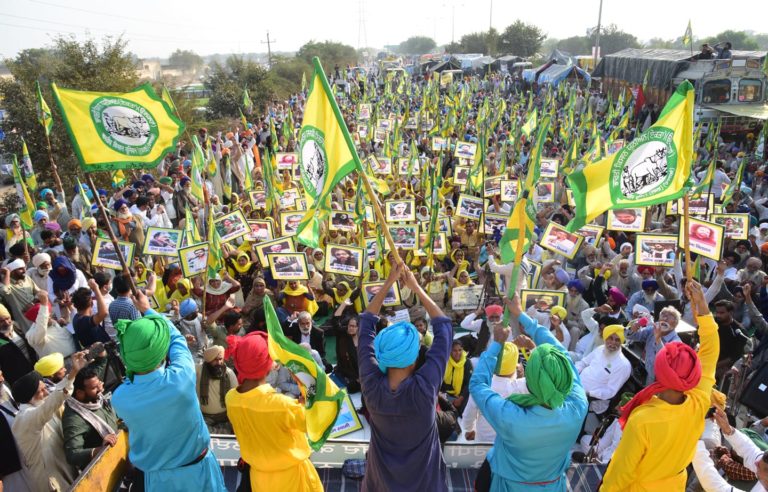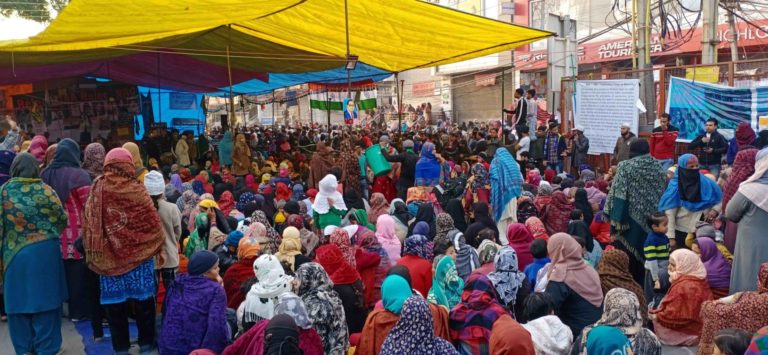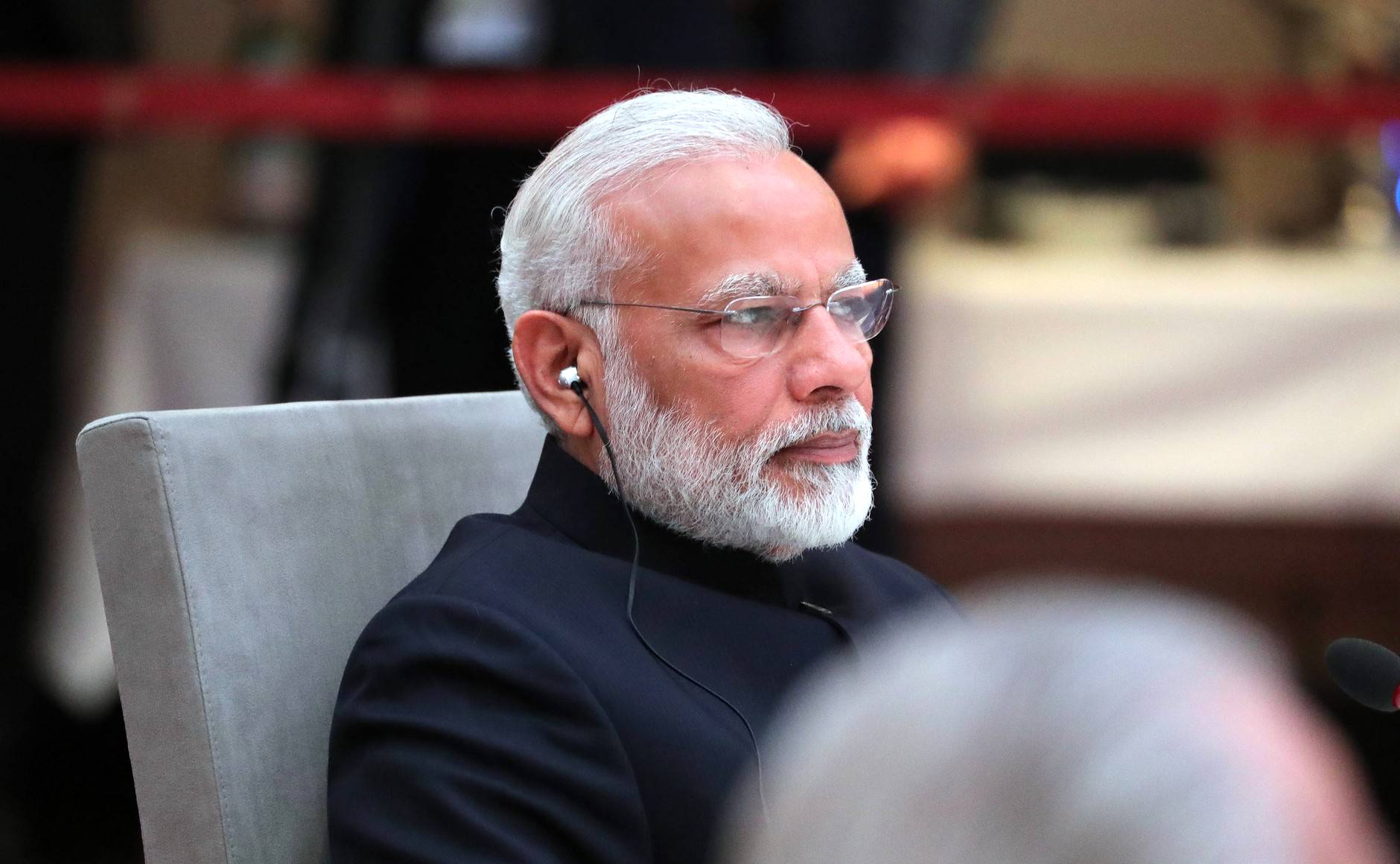A historical landmark for postcolonial democracy was realised when Narendra Modi became the first prime minister outside of the Indian National Congress (INC) to achieve a full majority win in two consecutive terms. Since his rise to power, there has been an increasing trend of pro-capitalist policies that have gone against the constitutional promise of equality for all. His form of politics revolves around an overbearing governance – with no better example than the recent agricultural reforms – that now poses a growing existential threat to the world’s largest democracy.
Following a set of restrictive agricultural measures on Sept. 27, 2020, a collective feeling of dissent festered within India’s working-class. These measures included three acts — on Produce Trade and Commerce, Assurance and Farm Services, and Essential Commodities — all of which leave the sector vulnerable and the farmers fearing that such reforms could leave them despairing at the mercy of brutal market forces. A continued trend of limiting economic measures have led to approximately 250 million Indian workers mobilising in response to these reforms, culminating into what has now become the largest organized protest in world history.
These measures were said to open up the tightly controlled agriculture sector and help free farmers from the archaic and outmoded operations of the past. The ruling party, Bharatiya Janata Party (BJP), held that these reforms would liberate farmers from the traditional wholesale ‘’mandis’’ (markets) through granting them a new-found level of freedom and accessibility to private corporations outside of the Agricultural Produce Market Committee (APMC).
This is a death warrant for small and marginalised farmers. This is aimed at destroying them by handing over agriculture and market to the big corporates,
— farmer Sukhdev Singh Kokri speaking for BBC Punjabi.
However, these reforms have loosened the pre-existing regulations that have protected farmers for decades on assured pricing, storage, and sale. A loss of assured pricing could see private actors setting prices lower than current produces, thereby edging out the farmers through monopolising the market. This could effectively drive mandis to insolvency and thus gut farmers from the safety net of commission and mandi fees. The essential commodities bill further limits the economic power of farmers through deregulating produce and alleviating storage limits. Private actors who can afford advanced storage appliances are thus more likely to out-compete farmers.
Advocates argue that there has been an enduring agrarian crisis in dire need of reform. Though this may be valid, agrarian policy expert Devendra Sharma told the BBC, “There are leakages in the current system… but replacing one failed model with another is not the solution.” A number of experts have condemned such reforms to have left a sector, which employs up to 60% of the population, under the control of capitalist forces. “Leaving farmers to the tyranny of the markets would be akin to putting the sheep before the wolf,” Devendra Sharma says.
Hundreds of thousands of protesters took to the streets of Delhi to oppose these vicious labour reforms that have contributed to a growing string of austerity and pro-investor measures, thus continuing the trend of capitalist exploitation. Workers beyond the agriculture sector have collectively endorsed the demands of farmers in a tremendous display of unity and solidarity for a cause that encompasses a fundamental working-class issue of financial inequality.

Award-winning journalist P Sainath proclaimed that the agrarian crisis is inextricably tied to the larger structural inequalities in India. ‘’There are phenomenal economic disparities between the working and upper-class and such reforms can see this disparity further widening,’’ he says.
Yet, the disparities between classes become clearer when observing the timing in which these sets of complex labour laws have been passed.
Only a crisis — actual or perceived — produces real change. When that crisis occurs, the actions that are taken depend on the ideas that are lying around,
— Economist Milton Friedman
If history has taught us anything, it is that periods of crisis are extremely volatile. The notion that economic progress can be achieved through capitalising on periods of intense difficulty has been a vital integrant to the neoliberal drive towards the free market. Shocking events like wars, terrorist attacks, and viruses are thus exploited by certain governments, which prey on public disorientation by ramping through radical free-market policies that further enrich the 1% at the expense of the working class.
Predictably, many neoliberal economists and journalists incited the BJP government to not waste the opportunities borne from such an unprecedented time. The height of the pandemic was thus thought to be the most opportune time to legislate predatory reforms that would save government expenditure by stimulating growth in private sectors at the cost of the working class. Such neoliberal policies have not only maintained economic disparities in India but have further aggravated them.
Related Articles: Equality in a Post-Pandemic Era | What COVID-19 Means for Investment in Agriculture
These legislations align with the BJP’s pattern of enacting unforeseen and startling measures. A policy in 2019 had seen the government abrogating Kashmir’s special status, which followed another stifling measure in 2016 when the currency was demonetised. Yet, the uproar incited particularly by these recent agricultural bills revealed an unprecedented resolve amongst farmers that the government could not ignore. The government had entered into negotiations with the farming committee, yet unrest endures with neither side willing to make compromises. Considering the BJP’s long history of containing public outrage, however, active negotiations signify a victory in and of itself.
Further constraints, incongruent of a democratic state, have stripped Indian citizens of any mode of legal recourse. A clause present in these bills has removed the legal platform for prosecution or any other legal proceedings against the government and/or state official for legislations done or intended in good faith. The government has worked to dismantle the fundamental democratic right of citizens litigating against the state through not only demobilising farmers of this right but all citizens.
The democratic right to protest also came under threat when peaceful protesters were met with state-sanctioned violence at the Punjab-Haryana and Haryana-Delhi borders. Trenches encircled with barbed wire were dug by police forces to prevent protesters from marching into the capital’s city centre. Tear gas, batons, and water cannons were some of the many extreme tools used by police forces to further oppress citizens of their constitutional rights.
These reforms highlight an intensifying attitude and treatment amongst the ruling class that transgresses cultural, religious, and humanistic bounds. Protesters, predominantly from the Sikh communities of Punjab, have suffered from demeaning rhetoric that relies on otherising and ostracising language to weaponize and disparage minority identities and thus undermine their cause and status. For instance, state officials alongside alt-right media outlets have frequently referred to protesters as ‘’Khalistani terrorists,’’ accusing the farmers of advocating separatism and casting them as a threat to national security.
This is not the first time the government has worked to undermine the legitimacy of a social cause. In late 2019, the BJP implemented the Citizenship Amendment Act (CAA) that granted citizenship for persecuted religious minorities from neighbouring countries with the exception of Muslims. Consequently, hundreds of Muslim women participated in a peaceful protest for 101 days in Shaheen Bagh to oppose the xenophobic CAA bill. Unsurprisingly, this cause was manipulated by those on the far right as a sinister scheme to subvert the state, prompting chants from counter-protesters to ‘’shoot the traitors.’’

Having successfully appealed to a majority of Indian citizens through the sentiment of nationalism, Modi has managed to progressively limit the scope of political and religious pluralism. He has striven away from the Nehru legacy of a secular India through crystalising a perception of the working class and religious minorities as mere subjects rather than citizens.
A progressive country that had once extraordinarily unified in dismantling traditional caste systems and religious divisions after breaking free from the shackles of British colonialism now appears to have steered towards the political status quo of their former emperors. Last year it was the Muslim women of Shaheen Bagh posing the biggest threat to national security. As of recently, however, the Sikh farmers have filled this role.
The remaining democratic foundations in India, although limiting Modi’s overt attempts at authoritarian rulership, have been undermined by his continued effort to reshape the government into a “guided democracy.” The farmers’ protest presents itself as one of the most reflective examples of Modi’s tendency to resort to means of control and subjugation. Governmental mechanisms of state-sanctioned violence, mass media control and propaganda – all of which are used to defame and suppress social discord – appear to have unveiled a government with all the aesthetics of a democratic polity, whilst operating as a de facto autocracy.
With all these infringements limiting the fundamental civil rights of citizens, perhaps the greatest shock of all is that the farmers’ protest even exists.
Editor’s Note: The opinions expressed here by Impakter.com columnists are their own, not those of Impakter.com. — In the Featured Photo: Indian Prime Minister Narendra Modi at an informal meeting of the BRICS Heads of State and Government ahead of the G20 Summit in Hamburg. Featured Photo Credit: Wikimedia Commons.










